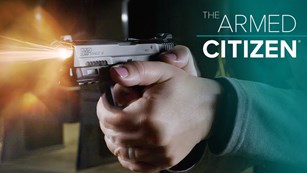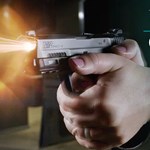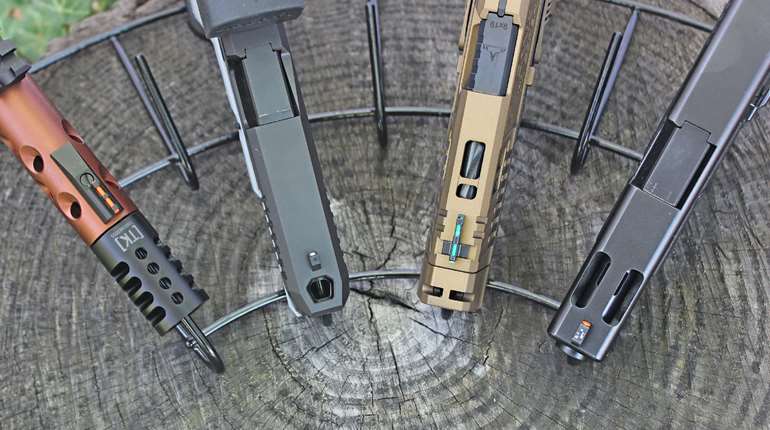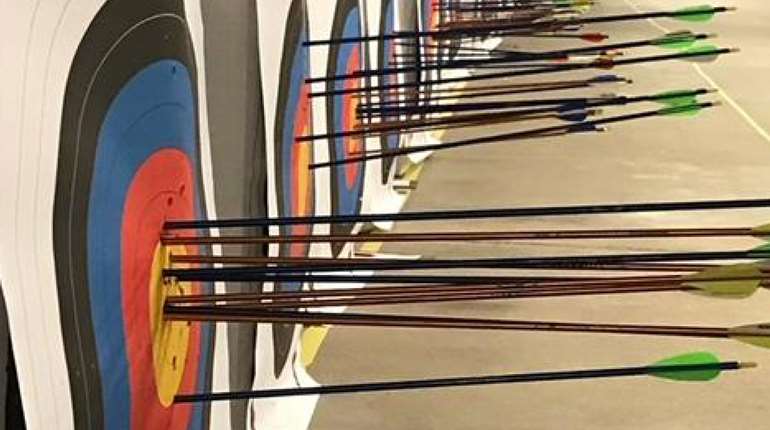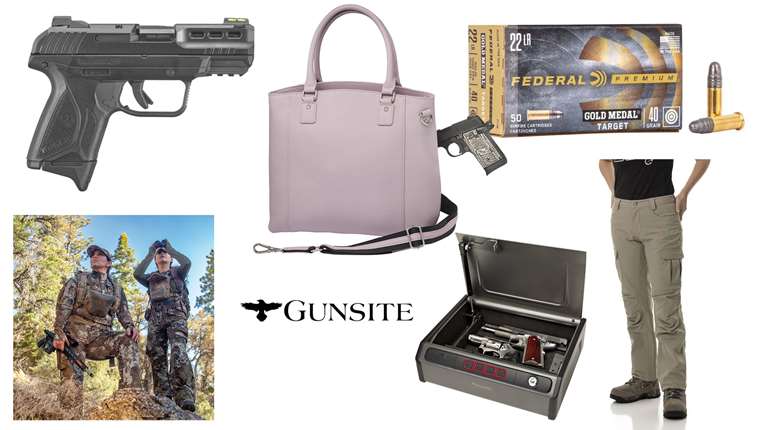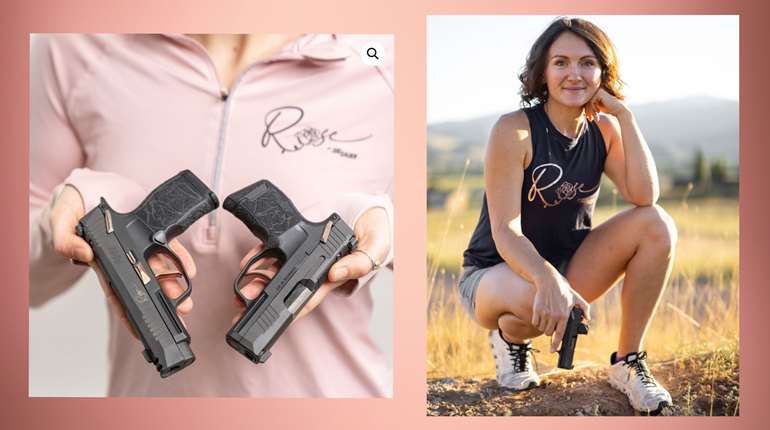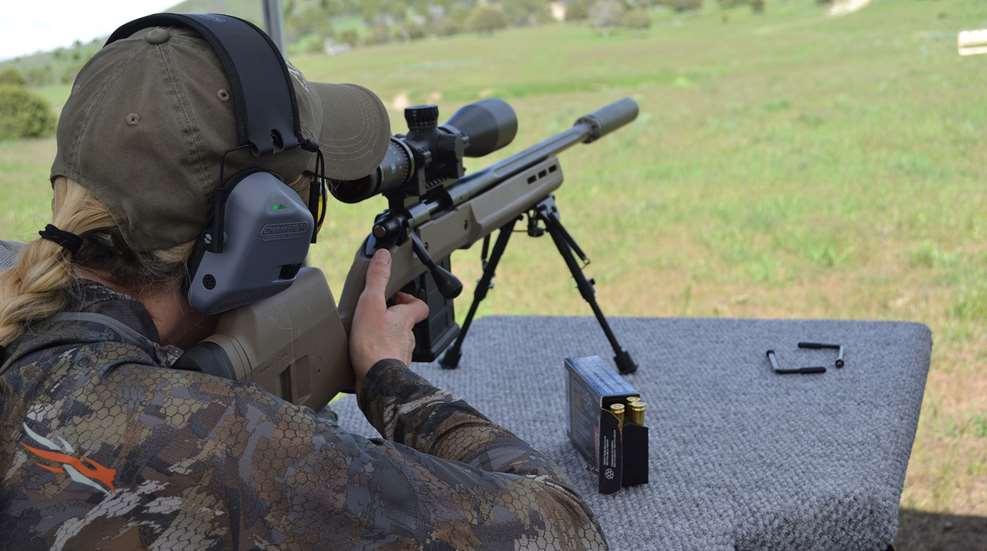
The basis of any good shot, regardless of the type of firearm being used, is a good trigger pull. For handguns and rifles, it’s a controlled squeeze; for shotguns, it’s quicker and less deliberate—more of a true pull. Whatever you call it, if your trigger pull is sloppy, your shot will be negatively affected. Snatching, slapping and jerking triggers are common culprits, but those can be worked out by taking your time and making a deliberate movement. The most insidious cause of a poor trigger pull, though, is the dreaded F-word: flinch.
A flinch is an involuntary, erratic movement of the body (usually the finger, arm, head or entire torso) upon engaging the trigger. In extreme cases, you might fail to pull the trigger at all. You don’t intend to do it, and you might not know you are doing it, but if a flinch is present, the results will show on your targets.
What Causes a Flinch?
For the most part, a flinch is a result of anticipation—your brain knows you’re about to experience a loud noise and some recoil when that trigger is pulled, and it starts to react to something that hasn’t actually happened yet. Your body might literally pull away from the gun in a subconscious attempt to get away from the recoil (which, incidentally, makes the recoil worse). The more you shoot, and the bigger and louder guns you shoot, the worse your flinch will get.
You might not flinch all the time. Maybe you only flinch with rifles; maybe rifles are no problem but you flinch when wingshooting with a shotgun. Or maybe you only flinch once in a great while, which makes the problem harder to diagnose and fix.
How Do I Know If I Have a Flinch?
Unload your gun and visually and physically double-check to ensure there are no rounds anywhere in the chamber or magazine. If it’s a shotgun or a rimfire rifle or handgun, load it with dummy rounds made for training. If it’s a centerfire rifle or handgun, you can dry fire. Get a friend to watch you or set up your smartphone to record you so you can analyze your movements afterward. Pick an imaginary aiming spot with a safe background. Get a good sight picture, and squeeze the trigger. Now ask your observer or play back the video: Did you or the gun move in any way when the trigger was pulled? If the answer is yes, you flinched.
For wingshooting, you’ll want to do this while swinging your shotgun. You can use the dummy rounds on a skeet field or sporting clays station, or you can practice swinging the gun following a line where the wall meets the ceiling in your home, again with the dummy rounds. Swing smoothly as if you planned to shoot a target, or follow the actual target if you’re on the skeet field, and pull the trigger as you swing on it. Ask your observer or play back the video: Did the gun waver off its line or did your body display any kind of erratic movement aside from the normal swing? If so, you flinched.
How to Fix a Flinch: Rifles and Handguns
OK, you’ve got a flinch. Relax: It happens to pretty much all shooters at some point, even experienced shooters who have been doing this for many years. There are some simple ways to help you recover and get rid of (or manage) your flinch.
First, dry-fire practice. Practice dry-firing the gun over and over, concentrating on a perfect, smooth trigger squeeze. It doesn’t matter how long a single pull takes you—smoothing it out is the priority. Sometimes I even close my eyes so I can focus all my energy on what the trigger pull feels like. When you’re doing this with open eyes, keep your focus on your reticle, dot or front sight, and maintain that focus throughout and after the trigger pull. It will help you notice if you flinch or not. When you get good at dry firing, try balancing a quarter on the end of your barrel. If you can pull the trigger without the quarter falling off, you’re doing great. Lots of dry-fire practice will help your brain realize that a trigger pull doesn’t always come with pain and noise.
Second, when it comes time for live fire, step down in caliber. Shooting a lot of .22LR at the range will get you back in the habit of enjoying shooting and will train your brain that recoil and big booms are really nothing to worry about. You can work your way back up to larger calibers.
Fixing the Flinch: Shotguns
For wingshooting, you can dry-fire using dummy rounds, but you’ll need to do so either on live targets (that you obviously don’t intend to break) or at home improvising a swing on an imaginary target line as mentioned above. This won’t fix your flinch by itself, but it will help.
Second, the same advice applies about stepping down in power. Try a smaller-gauge shotgun if you have one, or at least shoot the lightest-recoiling loads you can find for your gun until you get your flinch under control.
Third, flinching while wingshooting is sometimes a visual problem, when you expect to see a certain sight picture and what you actually see doesn’t match what you expected—usually because your swing is off in some way or the target did something unpredictable, as live birds tend to do. This can throw everything off and your brain might react by shutting your trigger finger down or causing it to jerk. The best way to fix this kind of flinch is by working with an instructor or coach and putting in deliberate practice on the field or course, learning and committing to memory the most common target trajectories and sight pictures to help you better understand what the barrel/bird relationship looks like.
Fourth, competitive shotgun shooters (especially in skeet) might have the option to use a release trigger in their gun. A release trigger works basically the opposite of a traditional trigger: You squeeze the trigger and nothing happens; you release the squeeze and the shotgun fires. This is much too dangerous for a hunting scenario and is only appropriate for controlled competitive environments, but it is almost guaranteed to cure a stubborn flinch for shotgunners. Because it takes seven muscles to pull a trigger and only two to release it, there’s much less movement for the brain to interrupt when it anticipates recoil and noise. The act of releasing a trigger is much more relaxing to the brain than pulling a trigger is. Switching to release triggers is no small feat, and it’s often a last resort for competitive shooters. That said, at least one shooter has won the World Skeet Championships using release triggers, and some of the best shooters in the National Skeet Shooting Associaton (NSSA) competition are shooting them. If you decide to make the swap, dedicate at least a year of serious practice to getting it down pat, and enlist the help of an experienced instructor or coach to help you iron out the wrinkles you’ll encounter.




